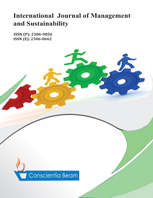Incorporating Pollution Taxes and/or Subsidies into Master Planning in Semiconductor Foundry Plants
DOI:
https://doi.org/10.18488/journal.11.2017.61.8.22Abstract
The continued development of manufacturing industries along with increasing greenhouse gas emissions has become a critical concern that forces mankind to reduce global warming. Given the long atmospheric lifetimes of Perfluorocarbons (PFCs), it is especially important to reduce the emissions of PFCs which are commonly found in the semiconductor industry. In this study, we propose four master planning models that incorporate pollution taxes, subsidies, and/or progressive pollution taxes into capacity allocation to examine the problem of anthropogenic PFC emissions. The results show that master planning with subsidies and/or progressive taxes provides more flexibility to a foundry plant than that with flat taxes only. Setting emission limits and considering taxation for master planning is the first step toward the success of an environmental policy.

